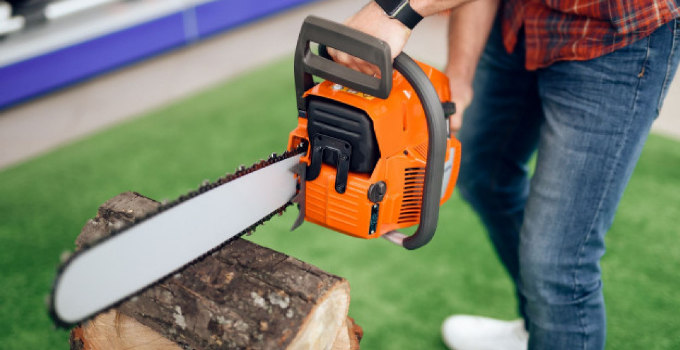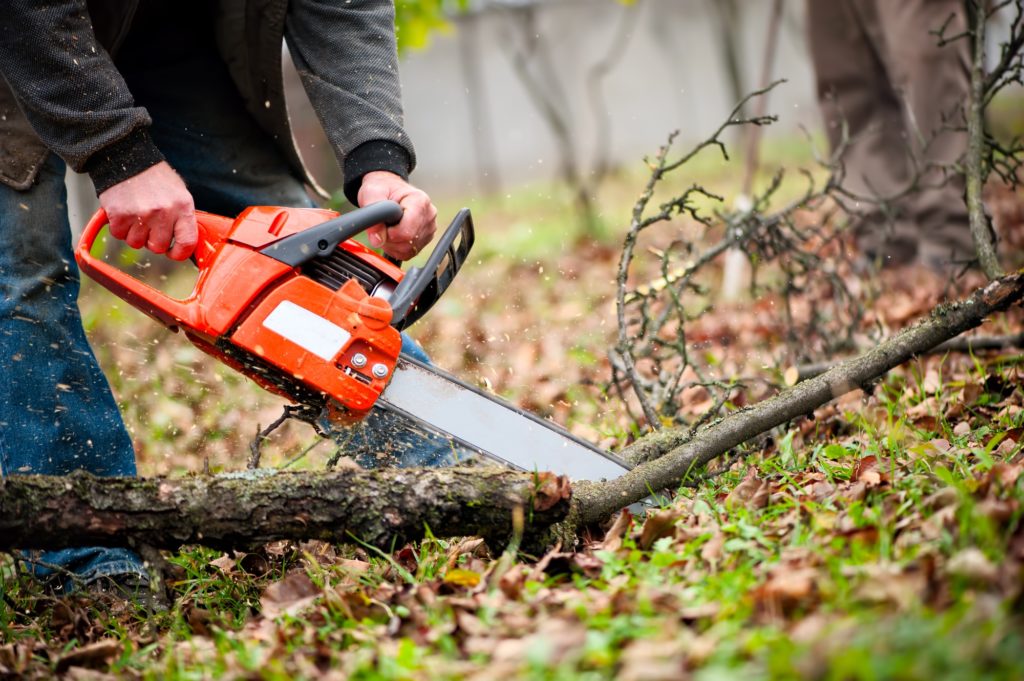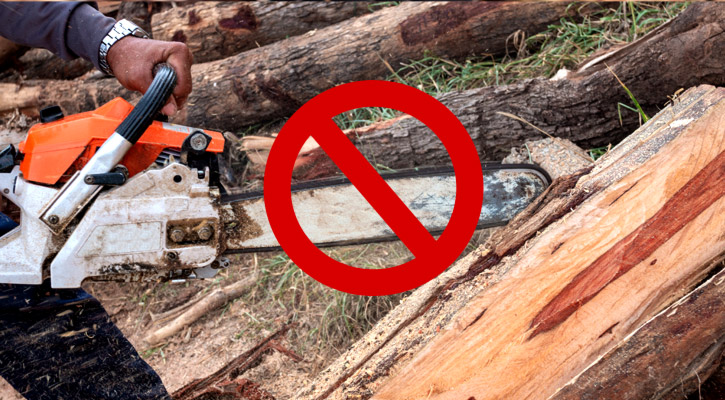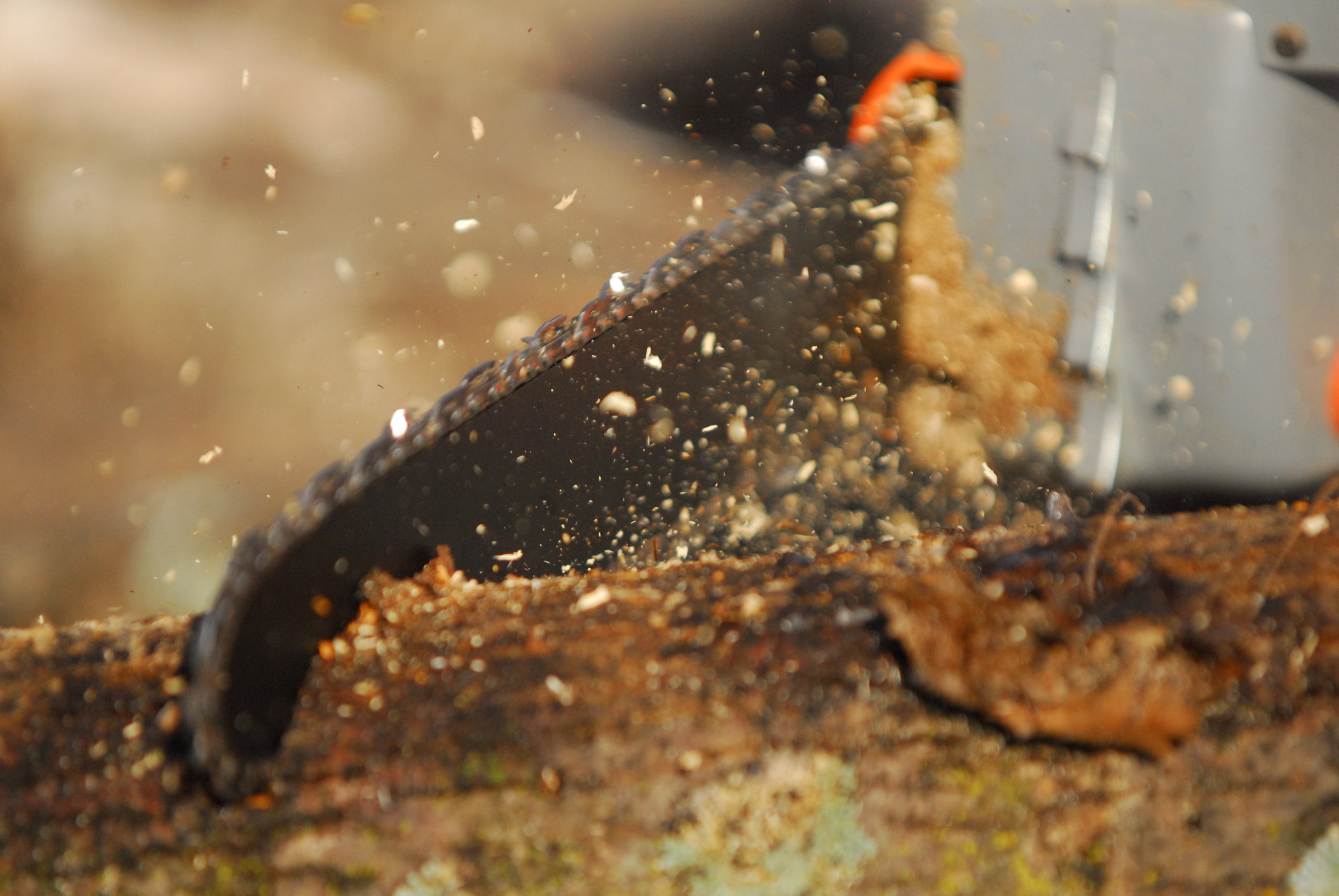Is it your first time using a chainsaw? Perhaps you have heard about chainsaw kickback and wonder what it implies? What is a chainsaw kickback, by the way? You don’t have to be worried if you think you are completely clueless about this term. This article can feed you the essential information so you will have a better understanding of the chainsaw kickback.
Read on to know more.
What is a Chainsaw Kickback?

A kickback develops when the rotating chain that is found at the guide bar tip touches the object or when the chain becomes stranded in the wood when sawing.
The touching of the guide bar tip may sometimes result in a lightning-comparable switching reaction and toss up and down the guide bar in the direction of the operator. The tight pressing of the saw chain in the guide bar top area may impact the guide bar to create a terrible kickback. In any case, you may not be able to handle the chainsaw well and you could seriously cause injury to yourself as well as the people near you.
Whether you believe it or not, a chainsaw kickback is a common reason for accidents involving the use of a chainsaw. It is also needless to say that these incidents happen due to improper cutting techniques.
What Causes the Kickback?

Generally, three situations could trigger a chainsaw kickback:
Chainsaw Kickback Zone
The top part of the chainsaw bar is considered to be the kickback danger zone. It is recommended that you never use this portion when cutting since it manifests the highest risk for kickback. However, if you insist on using this portion, you will essentially increase the likeliness of developing kickback. This is very evident even if you are using the best chainsaw model.
Wood Pressing Tightly the Chain
When you are projecting along with your chainsaw and your wood presses tightly near the chain, a kickback can form. Hence, it is advised that you strategize before cutting a tree trunk or log to make sure it will not pinch your chain.
As a user, you might want to cut the back portion of a branch in a single cutting, however, doing so can be harmful because of the chain’s prospect being tightly pressed during the cut. You should consider doing not a single cut, but two cuts to ensure your safety while operating the chainsaw.
Other Factors
Aside from the first two situations, other features can also increase the possibility of forming kickbacks. These are the following:
– Poor maintained chainsaw
– Overly loose tension on your chain
– Using a dull chain when cutting
– Broken chain parts
– Improper installation of chain parts
– Excessive settings on the chain gauge thickness
– Improper sharpening of the string-cutting angles
– Loose rivets
– Wrong shapes of the chain thickness gauge
One of these factors could be responsible for a chainsaw kickback. Make sure that you thoroughly check your chainsaw for any defects or difficulties before you use it. Furthermore, while the manual bar’s nose gets larger, the likeliness for kickback increases. Hence, you must be careful when using a model that has a size longer than 18 inches.
How to Prevent a Chainsaw Kickback?

There are several things that you can do to prevent a chainsaw kickback. Consider doing the following tips:
- Use your two hands when handling the chainsaw and firmly hold it.
- Do not forget to check the guide head.
- Be careful not to let the guide head gets in contact with an object. You should never cut branches using the guide bar head.
- Never saw with your arms raised.
- Never lean excessively forward.
- Cut trunk one at a time.
- Cut at maximum speed.
- Be very careful when thrusting the tool into an already initiated cut.
- Never try to mortise if you are not familiar with the technique.
- Use only a good-condition, well-tensioned, and properly sharpened chain.
- Always remember that the trunk can shift position. Different forces can block the slot for cutting and cram the chain.
- Operate the chainsaw only if you are in a good state of mind.
These are just some of the tips to prevent a chainsaw kickback. It will be best if you always practice these tips whenever you are operating the tool. You can save yourself from a lot of trouble if you become a responsible user of this tool.
Conclusion
What is a chainsaw kickback? By this time, you should have a basic understanding of this thing. You cannot discount the occurrence of a chainsaw kickback. In fact, a kickback can be very dangerous and could even cause fatal injuries. You should always consider following suitable cutting techniques to lessen the chance of forming a chainsaw kickback. It would also be smart if you wear appropriate protective gear if you are using the tool.

Leave a Reply